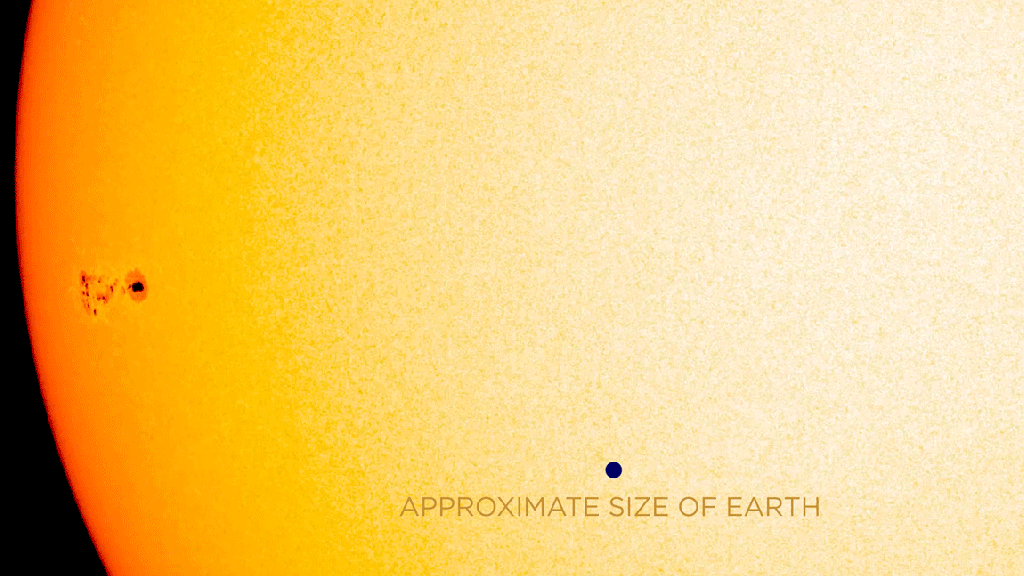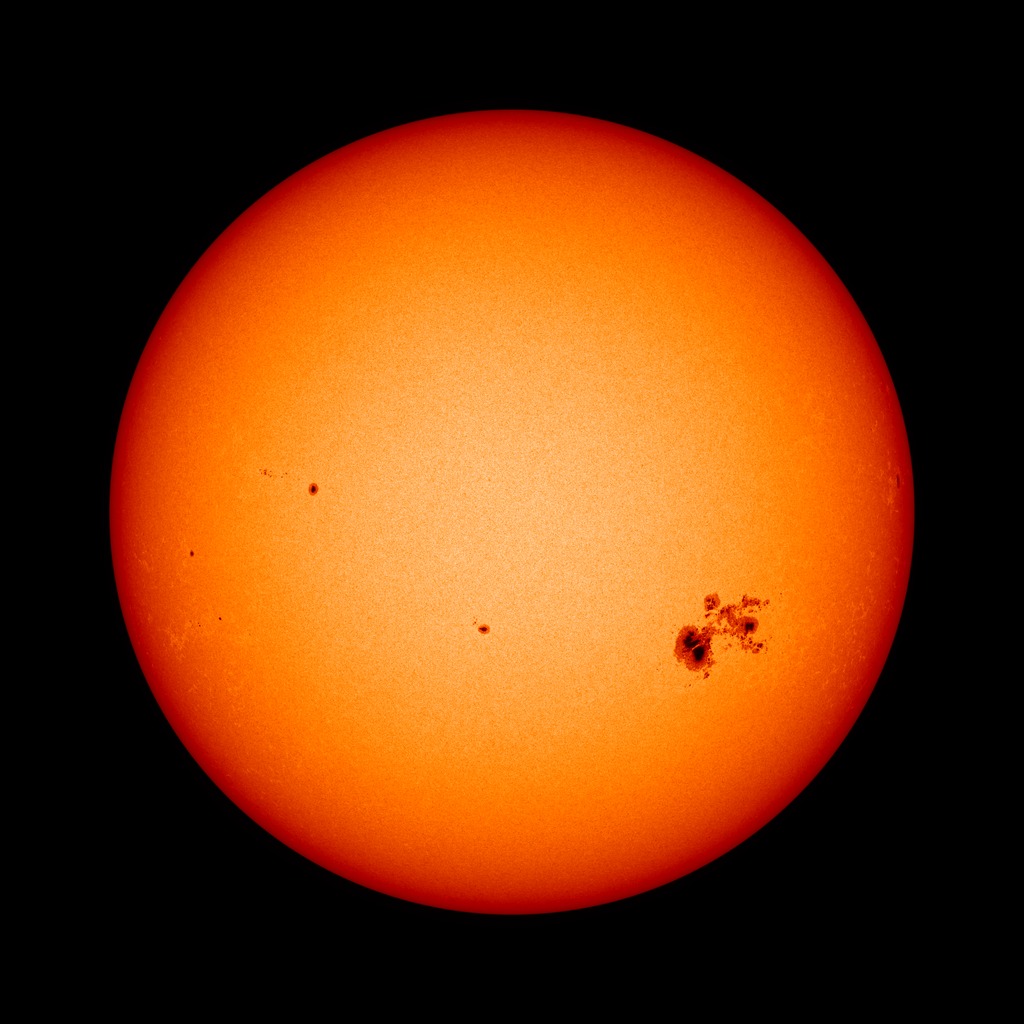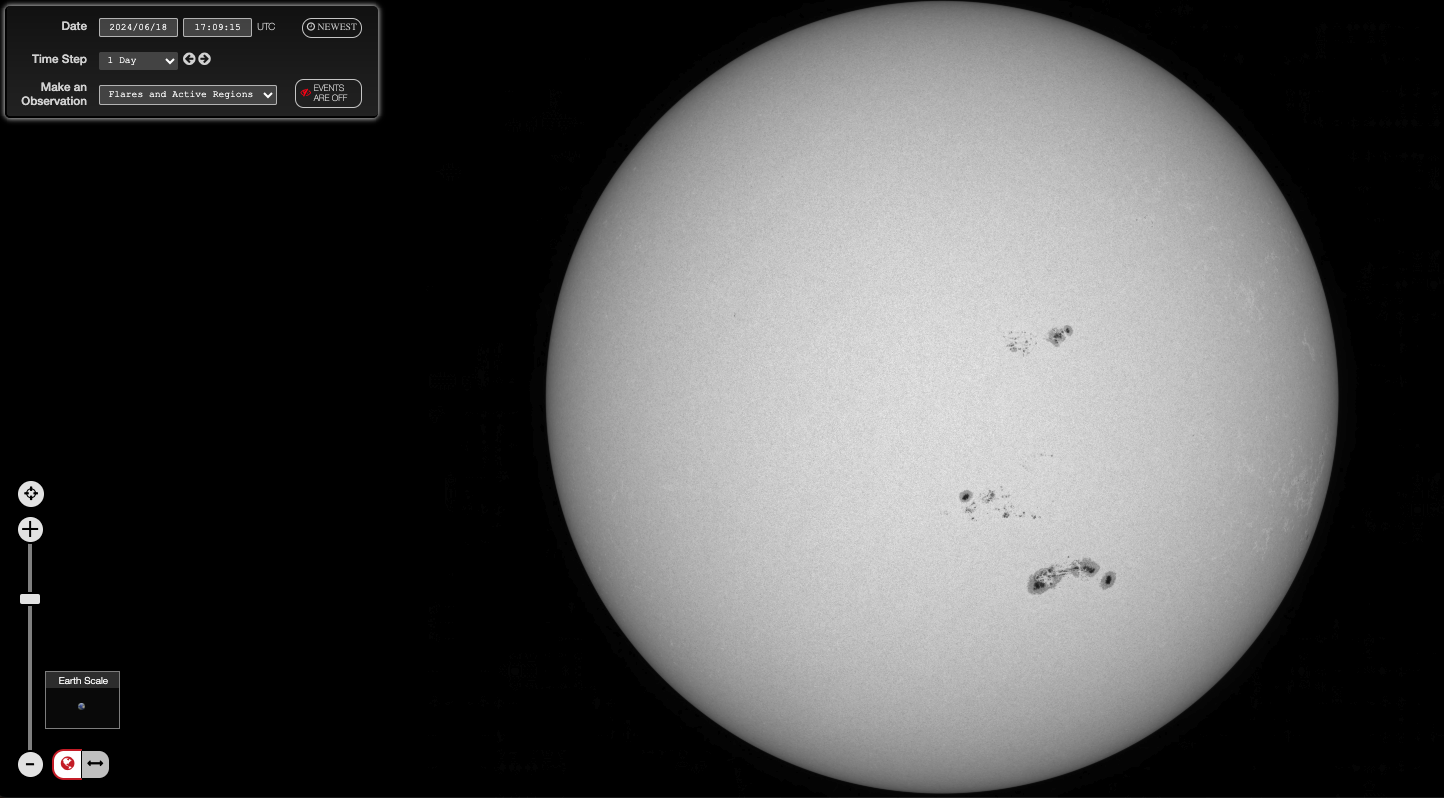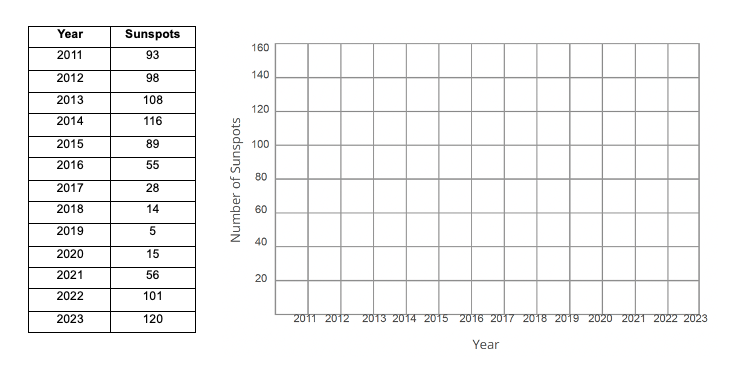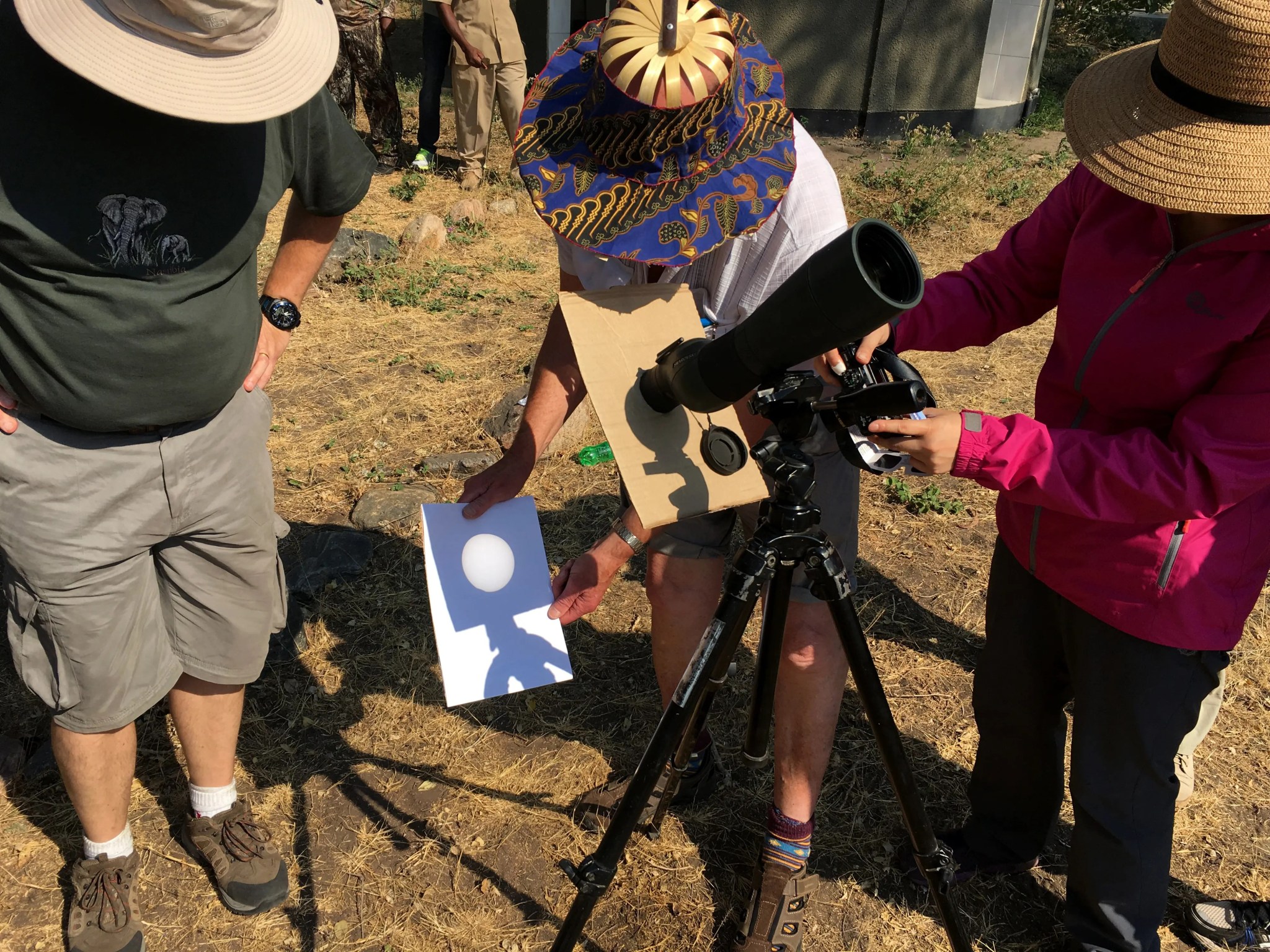-
Every 11 years, the Sun gets very active and the number of sunspots — dark, cooler areas on the Sun — increases dramatically.
For centuries, scientists have been counting sunspots to track this 11-year solar cycle, watching as the Sun transforms from a blank, spotless disk during solar minimum to one freckled with sunspots during solar maximum.
Now you can join the sunspot count, with the help of NASA’s Sun-watching spacecraft.
Choose any of the following activities to track the solar cycle’s progress with sunspots.
Images from NASA’s Solar Dynamics Observatory highlight the appearance of the Sun at solar minimum versus solar maximum. Sunspots are associated with solar activity and are used to track the solar cycle. Credit: NASA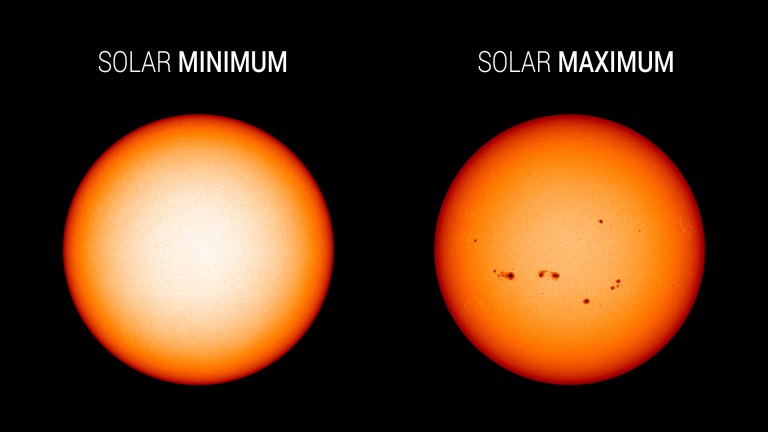 Images from NASA’s Solar Dynamics Observatory highlight the appearance of the Sun at solar minimum versus solar maximum. Sunspots are associated with solar activity and are used to track the solar cycle.NASA
Images from NASA’s Solar Dynamics Observatory highlight the appearance of the Sun at solar minimum versus solar maximum. Sunspots are associated with solar activity and are used to track the solar cycle.NASA
Activity 1: Track Sunspots in Real Time
Get started by visiting NASA’s Solar Dynamics Observatory (SDO) webpage to see current views of the Sun. Scroll down and look for the HMI Intensitygram images near the bottom of the page to see sunspots appearing on the Sun today. (HMI is short for Helioseismic and Magnetic Imager, a science instrument on SDO that reveals sunspots.)
Alternatively, you can visit student.helioviewer.org. Select “Sunspots” in the “Make an Observation” field. A current image of the Sun from SDO or another solar observatory will be displayed. (You can click the “events are on” button to turn off any sunspot labels.)
Count every sunspot, large and small, that you can see. Record your number along with the date. (Note: Dates on SDO's images use Coordinated Universal Time, or UTC. You can note the date in either UTC or your local date; just be consistent.)
Repeat once every day (when possible), preferably around the same time of day.
After a while, look at the numbers you’ve recorded. (Optional: Plot your numbers on a graph like the one below to reveal trends.) Are the number of sunspots gradually increasing, staying about the same, or decreasing? (Note: Sunspot numbers can go up and down from day to day, so it might take weeks or months before you can identify a long-term trend.)
-
Pro Tip:
Professionals typically use the Wolf method for counting sunspots (devised by Bern Observatory director Rudolf Wolf in the mid-1800s, then modified later to create precise long-term sunspot records). This method involves counting the number of sunspot groups (or clusters of sunspots) and multiplying the number of groups by 10, then adding the total number of individual sunspots. Single, independent sunspots are considered both a group and a sunspot (so one independent sunspot would count as 11, or 10 + 1). For example, if you count 5 groups and 23 total sunspots, the Wolf number would be 73 (5 groups x 10 for 50, plus 23 sunspots).
This method is useful because, when tracking sunspots and solar activity, the number of groups is more important than the number of spots. So the Wolf method gives the groups a greater “weight” by multiplying them by 10.
If you’d like to compare your sunspot counts to the professionals’, you can use the Wolf method. (If you need help identifying sunspot groups, visit this NASA webpage, which labels each group with a different number.) Or you can develop a counting method of your own. Just remember to use the same method every day!
Image: Sunspot groups are circled in this image of the Sun from NASA's Solar Dynamics Observatory. Credit: NASA/SDO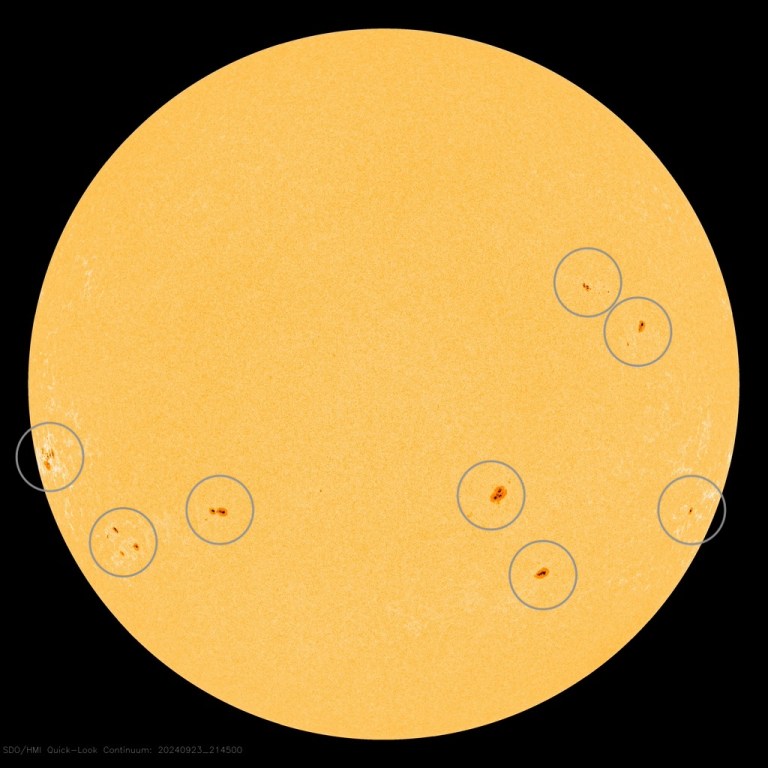 Sunspot groups are circled in this image of the Sun from NASA’s Solar Dynamics Observatory.NASA/SDO
Sunspot groups are circled in this image of the Sun from NASA’s Solar Dynamics Observatory.NASA/SDO
Activity 2: Track Sunspots Back in Time
If you missed a date or if you’d like to extend your sunspot counts backward in time to get a longer trend, visit student.helioviewer.org. There, enter the date and time (UTC) you want to see, and select “Sunspots” in the “Make an Observation” field. An image of sunspots for that date and time will be displayed. (Click the “events are on” button to turn off any sunspot labels.)
You can go backward in time just a few days, weeks or months, or even years. It’s up to you!
Note: SDO was launched in 2010. For earlier dates, an image from NASA’s Solar and Heliospheric Observatory (SOHO) is displayed. SOHO was launched in December 1995, so no images are available before 1996.
Activity 3: Plot Sunspots to Identify the Solar Cycle
See how sunspot numbers have changed over the current and past solar cycle by plotting the numbers below on a graph. Each number listed is the average daily sunspot number for that year. (The numbers are from the National Oceanic and Atmospheric Administration’s Space Weather Prediction Center.)
Can you identify when the last solar minimum was (the fewest number of sunspots)? Can you identify when the last solar maximum was (the greatest number of sunspots)?
You can also use Activity 2 in the Predict the Corona Activities from the NASA Heliophysics Education Activation Team (HEAT) to plot sunspot numbers and identify the solar cycle.
Activity 4: Compare the Current Solar Cycle to Past Solar Cycles
Visit this webpage from the National Oceanic and Atmospheric Administration’s Space Weather Prediction Center to see sunspot numbers plotted on an interactive graph.
Identify solar maximum for the previous solar cycle (Solar Cycle 24). How does it compare to the maximum for the current solar cycle (Solar Cycle 25)?
Use the horizontal scale bar below the graph to extend the graph farther back in time. (You can explore as far back as the year 1750!) How does the current solar cycle compare to past cycles? Which cycle do you think Solar Cycle 25 most closely resembles so far?
Predict when the current solar cycle might reach solar maximum and when the next solar minimum will be (or when the next solar cycle will begin).
Just for fun: Can you find your birth month on the chart? Was the Sun closer to solar maximum or solar minimum when you were born? How many solar cycles have there been during your lifetime?
Activity 5: Count Sunspots with Your Solar Telescope
If you have a safe solar telescope of your own that shows sunspots, you can use that to count and track sunspots. (Warning: Never look at the Sun through a telescope that does not have a safe solar filter! You could seriously damage both the telescope and your vision.)
For viewing sunspots, it’s best to use a dedicated white-light solar telescope or a regular telescope with a white-light solar filter added to the front of the telescope. (A white-light filter or telescope allows all wavelengths of visible light through but greatly reduces the amount of light that enters the telescope, making it safe to view the Sun.)
You can also use a telescope to project an image of the Sun. Learn some ways to do this safely.
Once each day (when possible), use your telescope to view sunspots on the Sun. You can sketch the sunspots you see, or count them while looking through the telescope. You can use the Wolf method (described in Activity 1) or your own counting method. Record the sunspot number alongside the current date.
After you’ve collected sunspot numbers over a span of time, look for any trends in the numbers. Are sunspots increasing, staying about the same, or decreasing?
-
Interested in contributing to official sunspot records? You can submit your sunspot counts to the American Association of Variable Star Observers (AAVSO), which has tracked sunspots for decades using reports from observers all over the world. To participate, you must use a solar telescope with a safe solar filter or use a solar projection method to count both sunspots and sunspot groups. Visit the AAVSO website for more information.
You can also earn a sunspot observing certificate from the Astronomical League through its Sunspotter Observing Program. You will need a solar telescope with a white-light filter, then either sketch or take images of sunspots over time. (Note: To receive a certificate, you will need to be a member of the Astronomical League, either as a member of a recognized astronomy club or as a member at large.)
Image: Sunspot drawings from SILSO, the World Data Center for the Sunspot Index and Long-term Solar Observations in Belgium, show sunspots around solar maximum in 2014. Credit: SILSO/Royal Observatory of Belgium
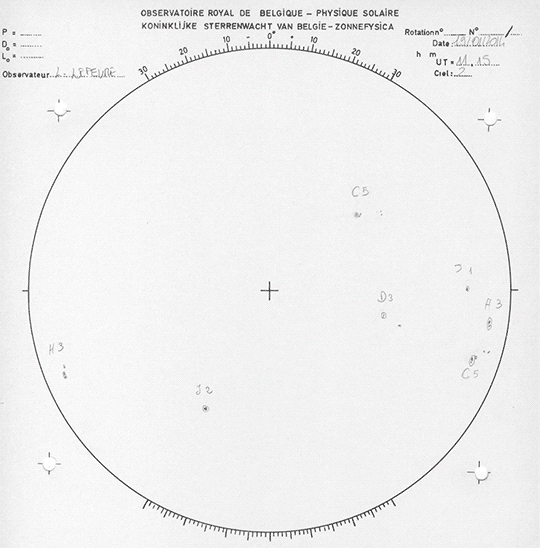
Sunspot Science
Discover more about sunspots, what causes them, how they change over time, and the different ways NASA studies them.
Learn more about sunspots